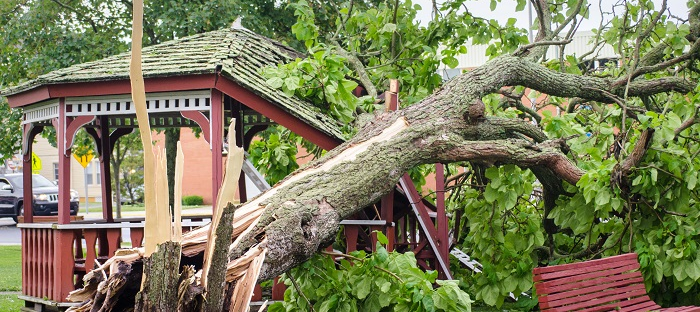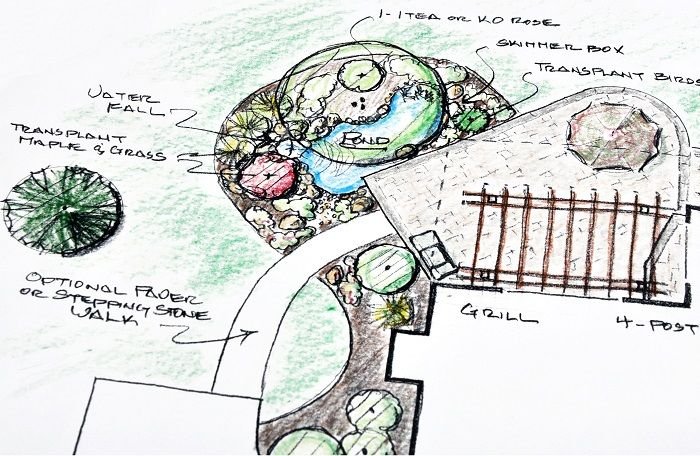How To Protect Your Garden From Wind
How to Protect Your Garden from Wind

Lost a plant in a windstorm? Here's how to make sure it doesn't happen again.
While only a few places on Earth (for instance, Iceland) deal with sustained high winds for the majority of the year, almost all climates experience high winds at one point or another. Unfortunately, unlike the arrival of heavy rain, wind can really destroy an unprepared garden. One of the best ways to protect against that is to know when strong winds might appear, so it's a good idea to talk to someone who has lived in your area for a long time about it. They should be able to tell you when substantial winds tend to arise and which local meteorologists are most likely to mention high winds in their forecasts.
Once you know when the winds are going to arrive, you can finally start helping your garden thrive through all the gusts and breezes.
Design Gardens with Wind Flow in Mind

The first step to a wind-proof garden is to understand how wind moves through your space. If the layout of nearby buildings and paths creates a "wind tunnel" through a section of your available garden area, consider how you could creatively avoid planting in that zone. If it happens to be the best possible place to plant, start looking for ways to create effective windbreaks. This can be as simple as adding semi-permeable fencing to allow wind to pass through in a less intense way, or it could be as elaborate as planting a hedge or a few rows of trees around your garden. If you've been considering water features, benches, or other taller structures for your garden, think carefully about where to put them so as to dissipate some major wind pressure. This will save you a lot of effort later on.
Stake and Secure Tall Plants
All gangly plants, from corn to tomatoes, benefit from being staked and secured, and all climbing plants prefer to have something to latch onto as they grow. These items aren't just good for the size and shape of plants — they also provide sturdy protection when high winds pass through. By staking plants and securing them to sturdy objects, you're allowing them to effectively bend and move with the wind. Otherwise, they would probably sway so much on their own that they broke off at the base.
Reinforce Greenhouses and Trellises

That being said, some winds are substantial enough to harm even the sturdiest staking or trellis, so you'll really want to consider all the structures that offer protection to your plants. Is your greenhouse ready for strong winds, or are there parts of it that are liable to collapse or warp under that kind of strain? Some states with wide, flat plains deal with sustained high winds regularly, and if you want to do any greenhouse gardening or gardening that involves a trellis in those places, you'll have to be sure to anchor those structures well and provide a way for the wind to naturally pass over or through them. In extreme wind, row covers might be a good option. Installing them entails buying a heavy 1.5-ounce-per-foot plastic tarp and securing it over a plant with cement blocks or other heavy anchors. This is a temporary solution for gale-force winds, as well as extreme cold, but given how work-intensive it is, it probably isn't required when low winds are in the forecast.
Let Plants Help Each Other
In many places, people have developed unique solutions to protect their plants from the wind. Planting alternating rows of low and high plants, for instance, can shelter the shorter, more vulnerable varieties. The "three sisters" method of growing corn, beans, and squash together is another example of how plants can benefit from each other: the corn provides the trellis for the beans, but the corn is also made less spindly in the wind because of the bushy squash plant and the bean shoots. Even just planting at the optimum distance from other plants can help a patch of a particular crop thrive, since a group of plants can form a permeable windbreak much easier than an individual plant can on its own.
Worried About Wind Erosion? Try Raised Beds or Terracing

One of the major issues with wind (besides breaking plants) is the possibility of soil erosion. Wind can carry off precious topsoil and leave plants undernourished and their roots exposed. To help prevent this, raised beds that aren't completely filled to the brim can be helpful. Even if soil is moved around inside the bed, it often will stay inside the frame and can easily be evened out later. Terraces can also be effective at getting lots of growing space without sacrificing any soil to the wind — especially on steep inclines.
No one wants the blown-off leaves, broken stems, and loss of soil caused by intense winds. With a little planning and attention to the weather, you can protect your plants from the elements no matter how crazy the winds get. You can even make the design of your garden match the unique wind situation in your area, saving you a lot of trouble and broken plants down the road.
How To Protect Your Garden From Wind
Source: https://davesgarden.com/guides/articles/how-to-protect-your-garden-from-wind
Posted by: jamesexther.blogspot.com

0 Response to "How To Protect Your Garden From Wind"
Post a Comment